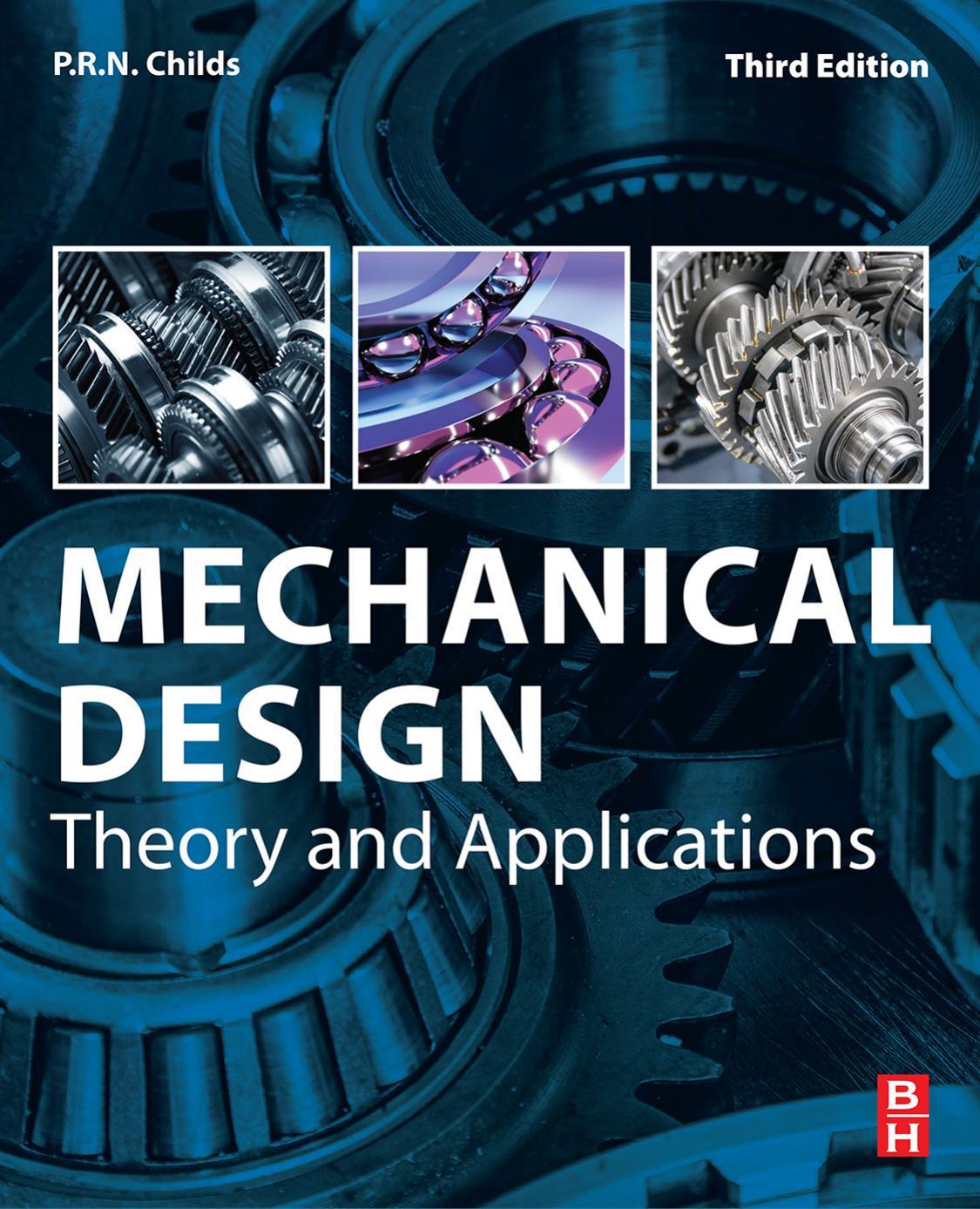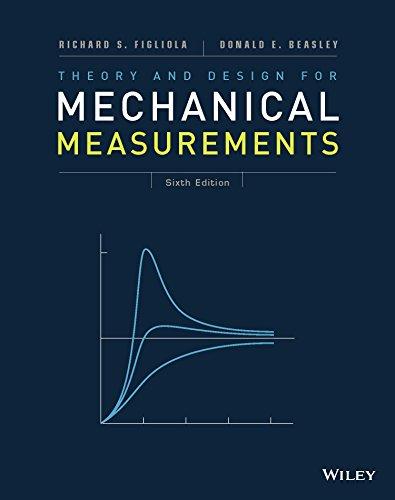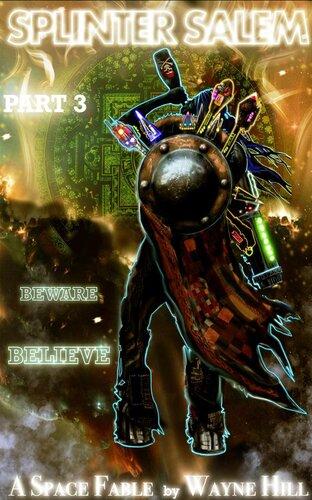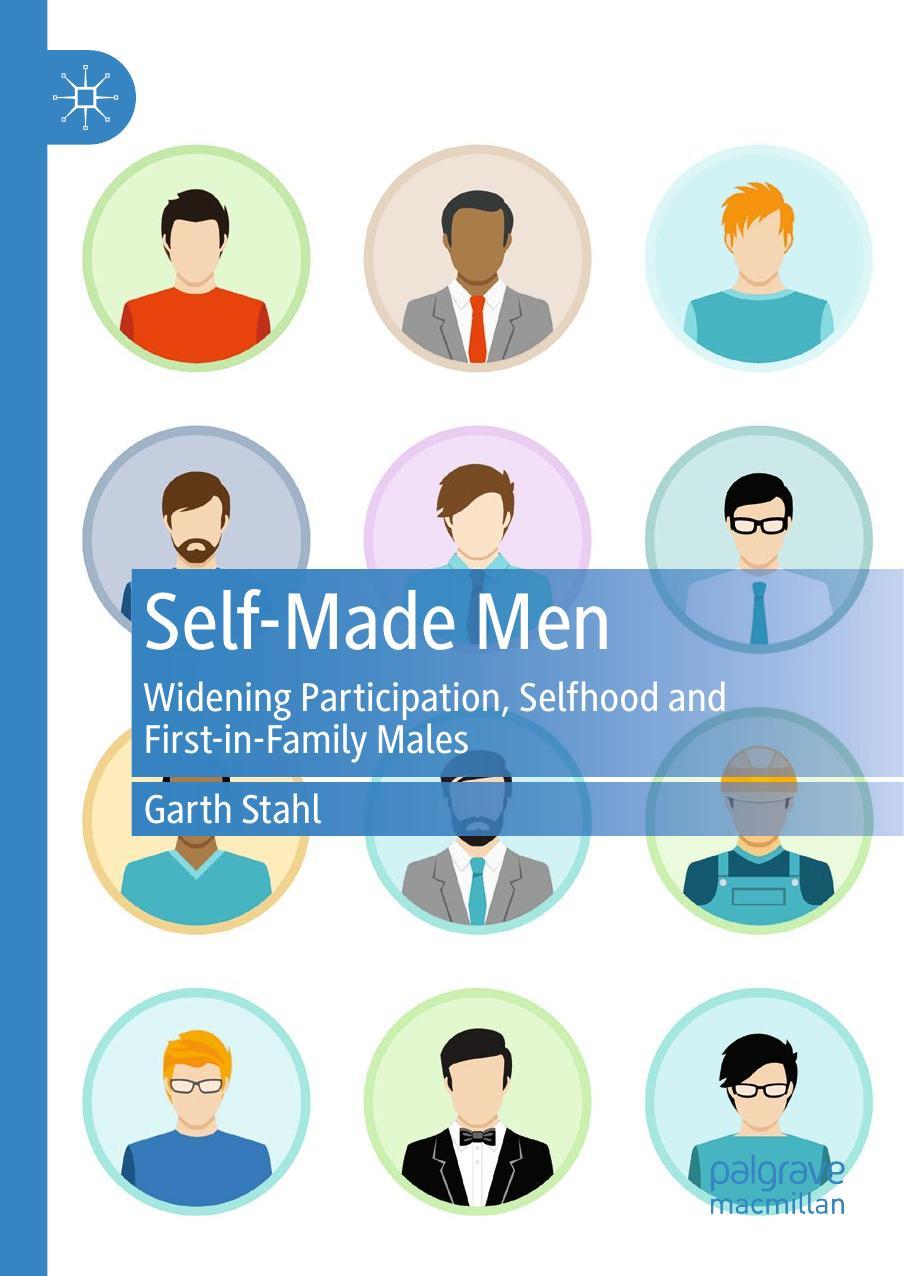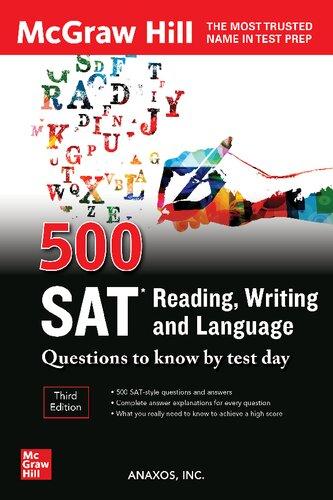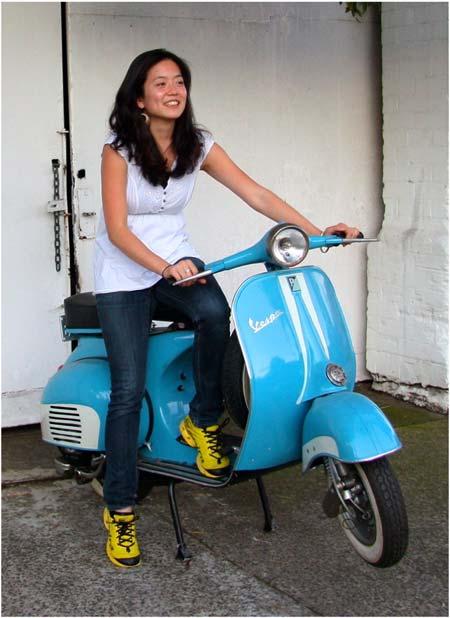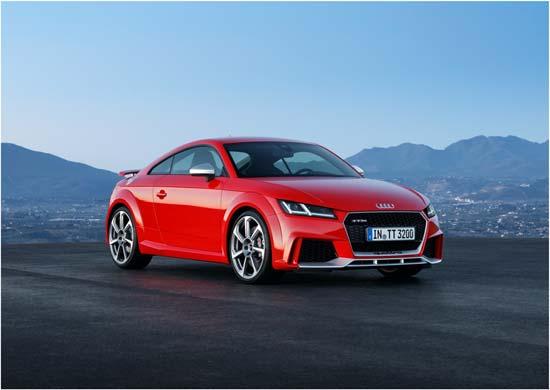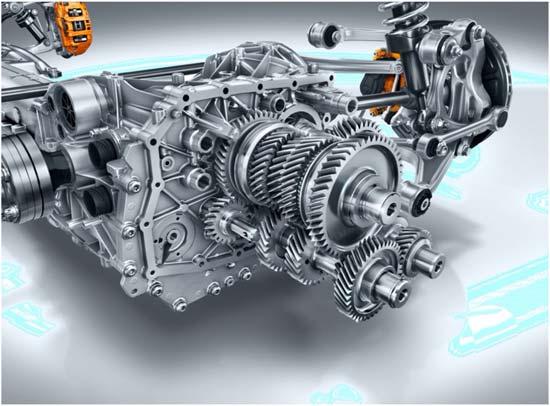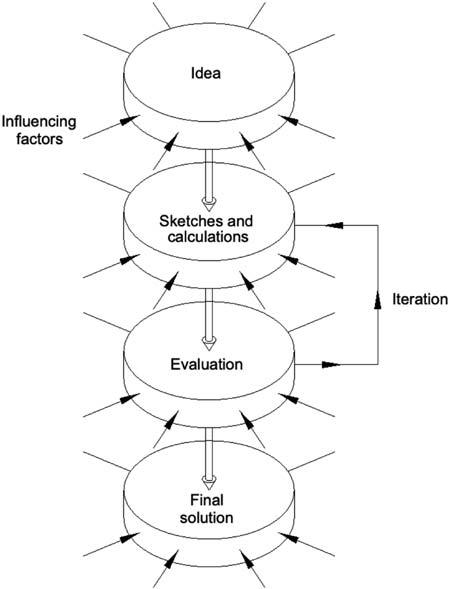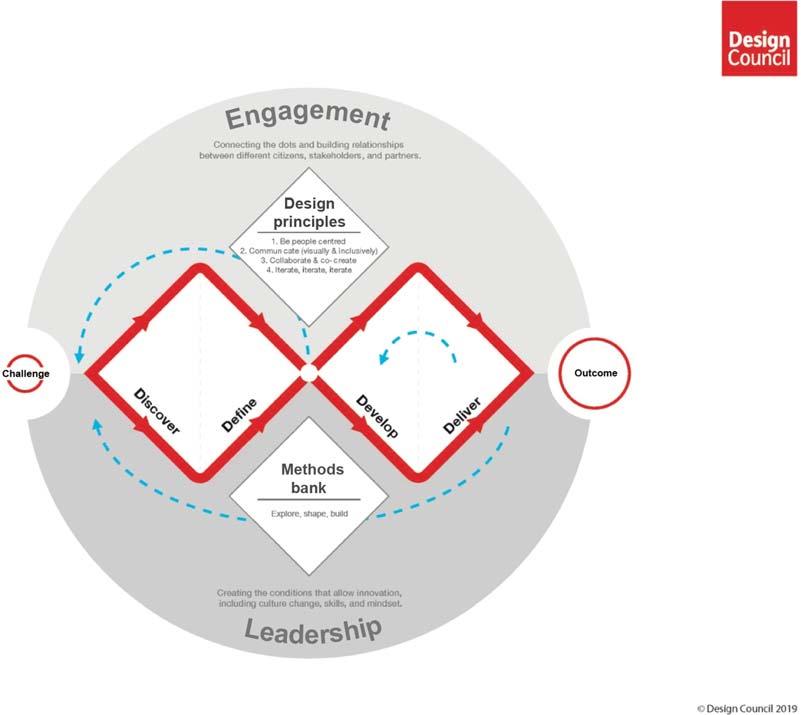https://ebookmass.com/product/mechanical-design-theory-andapplications-t-h-c-childs/
Instant digital products (PDF, ePub, MOBI) ready for you
Download now and discover formats that fit your needs...
Theory and Design for Mechanical Measurements 7th Edition Richard S. Figliola
https://ebookmass.com/product/theory-and-design-for-mechanicalmeasurements-7th-edition-richard-s-figliola/
ebookmass.com
Theory and Design for Mechanical Measurements, 6th Edition 6th Edition, (Ebook PDF)
https://ebookmass.com/product/theory-and-design-for-mechanicalmeasurements-6th-edition-6th-edition-ebook-pdf/
ebookmass.com
Transition-Metal-Catalyzed C-H Functionalization of Heterocycles Punniyamurthy T.
https://ebookmass.com/product/transition-metal-catalyzed-c-hfunctionalization-of-heterocycles-punniyamurthy-t/
ebookmass.com
Sustainable
Construction
Materials: Copper Slag 1st Edition Ravindra K. Dhir Obe
https://ebookmass.com/product/sustainable-construction-materialscopper-slag-1st-edition-ravindra-k-dhir-obe/
ebookmass.com
Waisted: The Biology of Body Fat Nathan Denton
https://ebookmass.com/product/waisted-the-biology-of-body-fat-nathandenton/
ebookmass.com
The Little Guide to Writing for Impact: How to Communicate Research in a Way that People Will Read Katherine Barrett
https://ebookmass.com/product/the-little-guide-to-writing-for-impacthow-to-communicate-research-in-a-way-that-people-will-read-katherinebarrett/ ebookmass.com
Splinter Salem Part Three Wayne Hill
https://ebookmass.com/product/splinter-salem-part-three-wayne-hill-2/
ebookmass.com
Integration with Complex Numbers : A Primer on Complex Analysis Aisling Mccluskey
https://ebookmass.com/product/integration-with-complex-numbers-aprimer-on-complex-analysis-aisling-mccluskey/
ebookmass.com
Self-Made Men: Widening Participation, Selfhood and Firstin-Family Males Garth Stahl
https://ebookmass.com/product/self-made-men-widening-participationselfhood-and-first-in-family-males-garth-stahl/
ebookmass.com
500 SAT Reading, Writing and Language Questions to Know by Test Day, Third Edition
https://ebookmass.com/product/500-sat-reading-writing-and-languagequestions-to-know-by-test-day-third-edition-inc/
ebookmass.com
MechanicalDesign
Thispageintentionallyleftblank
MechanicalDesign
TheoryandApplications
ThirdEdition
P.R.N.Childs
DysonSchoolofDesignEngineering
ImperialCollegeLondon,London,UnitedKingdom
Butterworth-HeinemannisanimprintofElsevier
TheBoulevard,LangfordLane,Kidlington,OxfordOX51GB,UnitedKingdom 50HampshireStreet,5thFloor,Cambridge,MA02139,UnitedStates
Copyright©2021ElsevierLtd.Allrightsreserved.
Nopartofthispublicationmaybereproducedortransmittedinanyformorbyanymeans,electronicormechanical,including photocopying,recording,oranyinformationstorageandretrievalsystem,withoutpermissioninwritingfromthepublisher.Detailson howtoseekpermission,furtherinformationaboutthePublisher'spermissionspoliciesandourarrangementswithorganizationssuchas theCopyrightClearanceCenterandtheCopyrightLicensingAgency,canbefoundatourwebsite: www.elsevier.com/permissions. ThisbookandtheindividualcontributionscontainedinitareprotectedundercopyrightbythePublisher(otherthanasmaybenoted herein).
Notices
Knowledgeandbestpracticeinthisfieldareconstantlychanging.Asnewresearchandexperiencebroadenourunderstanding,changesin researchmethods,professionalpractices,ormedicaltreatmentmaybecomenecessary.
Practitionersandresearchersmustalwaysrelyontheirownexperienceandknowledgeinevaluatingandusinganyinformation,methods, compounds,orexperimentsdescribedherein.Inusingsuchinformationormethodstheyshouldbemindfuloftheirownsafetyandthe safetyofothers,includingpartiesforwhomtheyhaveaprofessionalresponsibility.
Tothefullestextentofthelaw,neitherthePublishernortheauthors,contributors,oreditors,assumeanyliabilityforanyinjuryand/or damagetopersonsorpropertyasamatterofproductsliability,negligenceorotherwise,orfromanyuseoroperationofanymethods, products,instructions,orideascontainedinthematerialherein.
BritishLibraryCataloguing-in-PublicationData
AcataloguerecordforthisbookisavailablefromtheBritishLibrary LibraryofCongressCataloging-in-PublicationData AcatalogrecordforthisbookisavailablefromtheLibraryofCongress ISBN:978-0-12-821102-1
ForInformationonallButterworth-Heinemannpublications visitourwebsiteat https://www.elsevier.com/books-and-journals
Publisher: MatthewDeans
AcquisitionsEditor: BrianGuerin
EditorialProjectManager: GabrielaD.Capille
ProductionProjectManager: PrasannaKalyanaraman
CoverDesigner: VictoriaPearson
TypesetbyMPSLimited,Chennai,India
1 DESIGN
1.1Introduction
Theaimsofthisbookaretopresentanoverview ofthedesignprocess,andtointroducethetechnologyandselectionofanumberofspecificmachine elementsthatarefundamentaltoawiderangeof mechanicalengineeringdesignapplications.This chapterintroducesthedesignprocessfroman inventor’sperspective,thedoublediamondmodel, andmoreformalapproachessuchassystematic, total,andblendeddesign.Thechapteralsopresents anoverviewoftechnologies,whichservesasbuildingblocksformachineryandmechanicaldesign.
Theterm‘‘design’’ispopularlyusedtorefertoan object’sestheticappearancewithspecificreferenceto itsformoroutwardappearanceaswellasitsfunction.Forexample,weoftenrefertodesignerclothes, designicons,andbeautifulcars.Examplesofsome classicallyacclaimedvehiclesaregivenin Figs.1.1 and 1.2.Intheseexamples,itisbothvisualimpact, appealingtoourvisualperception,andtheconcept offunction,thattheproductwillfulfillarangeof requirements,whichareimportantindefiningthe so-calledgooddesign.Inthissection,wewillconsideranumberofdefinitionsandexplanationsrelevanttodesignandengineering.Suchdefinitionscan behelpfulinunderstandingthecontextfortheactivitiesassociatedwithdesignandengineering.
Theword‘‘design’’isusedasbothanounand averbandcarriesawiderangeofcontextsensitivemeaningsandassociations.Wecan,for example,refertoaproductormachineandsay thatwelikeorratethedesign.Alternatively,we
mightrefertoanactivityandtalkaboutdesigning aproductormachine.
Cox(2005) inhisreviewoncreativityinbusiness stated‘‘Designiswhatlinkscreativityandinnovation.Itshapesideastobecomepracticalandattractivepropositionsforusersorcustomers.Design maybedescribedascreativitydeployedtoaspecific end.’’TheworddesignhasitsrootsintheLatin ‘‘designare,’’whichmeanstodesignateormarkout, andsuchnotionswillbefamiliartoanengineer developingatechnicaldrawingoranarchitectproducingaplanforabuilding.Designcanbetaken tomeanalltheprocessesofconception,invention, visualization,calculation,refinement,andspecificationofdetailsthatdeterminetheformofaproduct, service,orsystem.Thedesigngenerallybeginswith eitheraneedorrequirementor,alternatively,an idea.Itcanendwithasetofdrawingsorcomputer representationsandotherinformationthatenablesa producttobemanufactured,oraserviceorsystem toberealizedandutilized.Generically,designcan bedefinedasthetransformationofanexistingstate toapreferredstate.Whilerecognizingthatthereis nowidelyacceptedsingledefinition,toclarifywhat thetermdesignmeans,thefollowingstatementcan provideabasis:
Design istheprocessofconceiving,developing andrealisingproducts,artefacts,processes,systems, services,platformsandexperienceswiththeaimof fulfillingidentifiedorperceivedneedsordesires typicallyworkingwithindefinedornegotiated constraints.
Figure1.1 Piaggio’sVespalaunchedin1946.TheVespa wasanearlyexampleofmonocoqueconstructionwhere theskinandframearecombinedasasingleconstruction toprovideappropriaterigidityandmountingforthe vehicle’scomponentsandriders.
Thisprocessmaydrawuponandsynthesize principles,knowledge,andmethodskillsandtools fromabroadspectrumofdisciplinesdependingon thenatureofthedesigninitiativeandactivity. Designcanalsoberegardedas‘‘thetotalactivity necessarytoprovideaproductorprocesstomeet amarketneed.’’Thislatterdefinitioncomesfrom theSEED(SharingExperienceinEngineering Design,nowDESIGtheDesignEducationSpecial InterestGroupoftheDesignSociety)model,see Pugh(1990).
AccordingtoaRoyalAcademyofEngineering document,engineeringcanbedefinedas
Thediscipline,artandprofessionofacquiring andapplyingscientific,mathematical,economic, socialandpracticalknowledgetodesignandbuild structures,machines,devices,systems,materials andprocessesthatsafelyrealisesolutionstothe needsofsociety.
Thisdefinitionisnotattributedtoasingle sourceand ABET(2011) ,theInstitution ofMechanicalEngineersandthe National AcademyofEngineering(2004) allhave similardefinitionsforengineeringinvolving theapplicationofscientificandmathematic principlestodesign.Thefollowingstatement
Figure1.2 TheAudiTT,originallylaunchedin1998. CourtesyAudi.
providesanindicationofthescopeof engineering:
Engineering istheapplicationoftechnicaland mathematicprinciplesincombinationwithprofessionalanddomainknowledge,inorderto deliverproducts,serviceandsystemstorealisea requirementoropportunity.
Theterms‘‘engineeringdesign’’and ‘‘designengineering’’areoftenusedinterchangeably.Theinclusionofthewordengineeringinbothsuggeststhattheyinvolvethe applicationofscientific,technical,andmathematicalknowledgeandprinciples.Itmaybe usefultothinkof‘‘engineeringdesign’’sitting alongside‘‘engineeringscience’’asthestrand ofengineeringthatisconcernedwithapplication,designing,manufacture,andbuilding. Designengineeringsuggestsaprocessin whichengineering(scientificandmathematical)approachesareappliedintherealization ofactivitiesthatbeganwithadesignconcept orproposal( ChildsandPennington,2015 ). However,suchdistinctionsremainsubtleand subjecttocontext.InlaunchingtheDyson SchoolofDesignEngineeringatImperial
CollegeLondon,Childsdefineddesignengineeringasfollows(see Childs,2019 ):
Designengineeringisthefusionofdesignthinking, engineeringthinkingandpracticewithinacultureof innovationandenterprise.
Thisbookisprincipallyconcernedwith mechanicalengineeringdesignwithinthecontext ofapplicationsofamechanicalengineeringnature, particularlythoseusingarangeofmachineelementssuchasbearings,gears,shafts,beltsand chains,clutchesandbrakes,springs,andfasteners. Anexampleofanapplicationshowingtheuseofa rangeofthesemachineelementsforanautomotive transmissionisgivenin Fig.1.3.
1.2TheDesignProcess
Havingadefinedapproachtoundertakingdesign canaidtheactivity,helpingtoensuretheprocessis undertakentoaprofessionalandhighstandard, with,forexample,thoroughconsiderationof whatisrequiredandensuringthatdueconsiderationisgiventotechnical,esthetic,social,andeconomicfunction.Manydesignprocesseshavebeen
Figure1.3 Aseven-speedsportstransmissionincorporatingawiderangeofmachineelementsconsideredinthisbook. CourtesyDaimlerAG,releasedateNovember17,2014.
proposedovertheyearswithconsultancies,engineeringcorporations,andindustrybodiesaswellas academicgroupsdevelopingtheirownbrandof approaches(e.g.,see ClarksonandEckert,2005). Commonlycitedmethodsincludetheeducational approachCDIO(conceive,develop,implement, operate),totaldesign,doublediamond,concurrent engineering,sixsigma,multidisciplinarydesign optimization(MDO),andgatedreviews.Design processescanbebroadlycategorizedasactivitybased,involvinggeneration,analysis,andevaluation, andstage-based,involvingdistinctphasesof,for example,taskclarificationandconceptualdesign. Itisalsowidelyrecognizedthatexperiencedpractitionersapproachdesigninadifferentmannerto novicedesigners(e.g.,see Bjo ¨ rklund,2013),and thishasresultedintheuseofsomeapproaches ineducationthataredistinctfromcommercial engineeringpractice.
Probablyfromyourownexperienceyouwill knowthatdesigncanconsistofexamininganeed oropportunityandworkingontheproblemby meansofsketches,models,brainstorming,calculationsasnecessary,anddevelopmentofstylingas appropriate;makingsuretheproductfitstogether andcanbemanufactured;andconsideringcosts. Theprocessofdesigncanberepresentedschematicallytolevelsofincreasingformalityandcomplexity. Fig.1.4 representsthetraditionalapproach associatedwithloneinventors.Thismodelcomprisesthegenerationofthe‘‘brightidea,’’drawings, andcalculationsgivingformorshapetotheidea andjudgmentofthedesignandreevaluationif necessary,resultinginthegenerationoftheend product.Theprocessofevaluationandreworking anideaiscommonindesignandisrepresentedin themodelbytheiterationarrowtakingthedesign activitybackastepsothatthedesigncanbe improved. Fig.1.5 illustratesthepossibleresults fromthisprocessforabicyclelock.
Fig.1.6 showsamoreprescribeddescription ofadesignprocessthatmightbeassociatedwith engineersoperatingwithinaformalcompany managementstructure.Thevarioustermsused in Fig.1.6 aredescribedin Table1.1.
Thetraditionalandfamiliar‘‘inventor’s’’ approachtodesign.
Although Figs.1.4 and 1.6 atfirstsightsuggest designoccurringinasequentialfashion,withone taskfollowinganother,thedesignprocessmay actuallyoccurinastepforward,stepbackfashion. Forinstance,youmayproposeasolutiontothe designneedandthenperformsomecalculationsor judgments,whichindicatethattheproposalisinappropriate.Anewsolutionwillneedtobeputforwardandfurtherassessmentsmade.Thisisknown astheiterativeprocessofdesignandformsan essentialpartofrefiningandimprovingtheproduct proposal.Thenonlinearnatureofdesignisconsideredby HallandChilds(2009).
Notethattheflowchartsshownin Figs.1.4 and 1.6 donotrepresentamethodofdesign butratheradescriptionofwhatactuallyoccurs withintheprocessofdesign.Themethodof designusedisoftenuniquetotheengineering ordesignteam.Designmethodologyisnotan
Figure1.4
exactscience,andthereareindeednoguaranteedmethodsofdesign.Somedesignerswork inaprogressivefashion,othersworkonseveral aspectssimultaneously.Anexampleofdesign followingtheprocessidentifiedin Fig.1.6 is giveninthefollowingexampleinorderto
Figure1.5 TheLiteLokbicyclelock. Courtesy(A)NeilBarron,(B)and(C)LiteLokLtd.
Figure1.6 Thedesignprocessillustratingprincipalphasesandsomeoftheiterativestepsinvolvedintheprocess.
introducesomeofthetypicalactivitiesthat mightoccur.
Example1.1
Followingsomeinitialmarketassessments, theboardofaplantmachinerycompany hasdecidedtoproceedwiththedesignof
anewproductfortransportingpallets aroundfactoriesandwarehouses.The boardhasinmindaforklifttruckbutdoes notwishtoconstrainthedesignteamto thisconceptalone.Theprocessofthe designcanbeviewedintermsofthelabels usedin Fig.1.6 .
Table1.1 Designphases.
PhaseDescription
Recognitionof need
Definitionof problem
Oftendesignbeginswhenanindividualorcompanyrecognizesaneedoridentifiesapotentialmarket,fora product,device,orprocess.Alternatively,‘‘need’’canbedefinedaswhenacompanydecidestoreengineer oneofitsexistingproducts(e.g.,producinganewcarmodel).Thestatementofneedissometimes referredtoasthebrieformarketbrief.
Thisinvolvesallthespecificationoftheproductorprocesstobedesigned.Forexample,thiscouldinclude inputsandoutputs,characteristics,dimensions,andlimitationsonquantities.
SynthesisThisistheprocessofcombiningtheideasdevelopedintoaformorconcept,whichoffersapotential solutiontothedesignrequirement.Thetermsynthesismaybefamiliarfromitsuseinchemistrywhereitis usedtodescribetheprocessofproducingacompoundbyaseriesofreactionsofothersubstances.
AnalysisThiscaninvolvetheapplicationofengineeringscienceusingsubjectsexploredextensivelyintraditional engineeringcoursessuchasstaticsanddynamics,mechanicsofmaterials,fluidflow,andheattransfer.These engineering‘‘tools’’andtechniquescanbeusedtoexaminethedesigntogivequantitativeinformationsuch aswhetheritisstrongenoughorwilloperateatanacceptabletemperature.Analysisandsynthesis invariablygotogether.Synthesismeansputtingsomethingtogetherandanalysismeansresolvingsomething intoitsconstituentpartsortakingittopieces.Designershavetosynthesizesomethingbeforeitcanbe analyzed.Thefamouschickenandtheeggscenario!Whenaproductisanalyzedsomekindofdeficiencyor inadequacymaybeidentifiedrequiringthesynthesisofanewsolutionpriortoreanalysisandrepetitionof theprocessuntilanadequatesolutionisobtained.
OptimizationThisistheprocessofrepetitivelyrefiningasetofoften-conflictingcriteriatoachievethebestcompromise.
EvaluationThisistheprocessofidentifyingwhetherthedesignsatisfiestheoriginalrequirements.Itmayinvolve assessmentoftheanalysis,prototypetesting,andmarketresearch.
Solution
Recognitionofneed(ormarketbrief)—Thecompanyhasidentifiedapotentialmarketfora newpallet-movingdevice.
Definitionofproblem Afullspecificationof theproductdesiredbythecompanyshouldbe written.Thisallowsthedesignteamtoidentify whethertheirdesignproposalsmeettheoriginal request.Herealistofinformationneedstobe developedandclarifiedbeforedesigncanproceed.Forexample,forthepallet-movingdevice beingexploredhere,thiswouldlikelyinclude aspectsforconsiderationsuchas
Whatsizesofpalletaretobemoved?
Whatisthemaximummassonthepallet?
Whatisthemaximumsizeoftheloadonthepallet? Whatrangeofmaterialsaretobemovedandare theypackaged?
Whatisthemaximumheightthepalletneedstobe lifted?
Whatterrainmustthepallet-movingdeviceoperateon?
Whatrangeisrequiredforthepallet-movingdevice?
Isaparticularenergysource/fueltobeused?
Whatlifetimeisrequired?
Aretheremanufacturingconstraintstobe considered?
Whatisthetargetsalesprice?
Howmanyunitscanthemarketsustain?
Isthedevicetobeautomaticormanned?
Whatlegalconstraintsneedtobeconsidered?
Thislistisnotexhaustiveandwouldrequire furtherconsideration.Thenextstepistoquantify eachofthecriteria.Forinstance,thespecification mayyieldthatstandardsizepallets,see Fig.1.7, areinvolved,themaximumloadtobemovedis 1000kg,themaximumvolumeofloadis2m3, thereachmustbeupto3m,useisonfactory floorandasphaltsurfaces,thedevicemustbe capableofmovingasinglepallet100mandmust beabletorepeatthistaskatleast100timesbefore refuelingorrechargingasnecessary,thedesignlife fortheproductis7years,productionisina Europeancountry,thetargetsellingpriceis 20,000Euros,theproductionrunis3000units
Figure1.7 Palletdimensionsandterminology(seeBSISO509).
peryear,thedeviceistobeoperatedbyaperson, andthedesignmustbecomplianttoISO (InternationalOrganizationforStandardization) andtargetcountrynationalstandards(e.g.,seeBS ISO509,BSISO6780,BSENISO445,BSEN 13545,BSISO18334,BS5639-1,andBSISO 2330).
Synthesis—Thisisoftenidentifiedastheformativeandcreativestageofdesign.Someinitial ideasmustbeproposedorgeneratedinorderfor themtobeassessedandimproved.Conceptscan begeneratedbyimagination,experience,orby theuseofdesigntechniquessuchasmorphologicalcharts.Someevaluationshouldbemadeat thisstagetoreducethenumberofconcepts requiringfurtherwork.Varioustechniquesare availableforthis,includingmeritandadequacy assessments.
Analysis—Onceaconcepthasbeenproposed, itcanthenbeanalyzedtodeterminewhether constituentcomponentscanmeetthedemands placedonthemintermsofperformance,manufacture,cost,andanyotherspecifiedcriteria. Alternatively,analysistechniquescanbeusedto determinewhatsizecomponentsneedtobeto meettherequiredfunctions.
Optimization—Inevitably,thereareconflicts betweenrequirements.Inthecaseoftheforklift truck,size,maneuverability,cost,estheticappeal,
easeofuse,stability,andspeedarenotnecessarily allinaccordancewitheachother.Costminimizationmaycallforcompromisesonmaterialusage andmanufacturingmethods.Theseconsiderations formpartoftheoptimizationoftheproductproducingthebestormostacceptablecompromise betweenthedesiredcriteria.Optimizationisconsideredfurtherin Section1.4
Evaluation—Onceaconcepthasbeenproposed andselected,andthedetailsofcomponentsizes, materials,manufacture,costsandperformance workedout,itisthennecessarytoevaluateit. Doestheproposeddesignfulfillthespecification? Ifitappearsto,thenfurtherevaluationbypotential customersanduseofprototypedemonstrators maybeappropriatetoconfirmthefunctionalityof thedesign,judgecustomerreaction,andprovide informationofwhetheranyaspectsofthedesign needtobereworkedorrefined.
1.3DesignModels
Theprocessofdesignhasbeenthefocusof researchanddevelopmentformanyyears,anda numberofdesignmodelsandmethodologieshave beenformalized.Designmethodologyisaframeworkwithinwhichthedesignercanpracticewith thoroughness.Takinga standardapproachto undertakingdesigncanbeusefulinhelpingto
ensureimportantaspectsareaddressedandleverage priorexperience.Followingaformalizedapproach ormodelisnotnecessarilygoingtomeanthat ahigh-qualitydesignoutcomeisguaranteed. Nevertheless,amodelorformalapproachcanaid managementoftheactivity.Variousapproachesto thedesignprocessareintroducedhere,including systematicdesign,doublediamond,CDIO,and totaldesign.Inthesectionon‘‘Totalandblended design’’anupdatedmodelispresented.blending aspectsofprojectmanagementsuchascontemporarytopicsofneedandopportunityanalysis,virtual realization,sustainability,andresponsiblebusiness.
Systematicdesign
Asystematicapproachtodesignhasbeendevelopedandproposedby PahlandBeitz(1996) whodividetheirmodelintofourphases:
1.productplanningandclarifyingthetask
Table1.2 Systematicdesignstages,activities,andphases.
2.conceptualdesign
3.embodimentdesign
4.detaildesign
Theactivitiesassociatedwithsystematicdesignare outlinedin Table1.2.Althoughtheactivitiestake placeinphases,iterationdoesoccurbetweeneachof theactivities.Forexample,informationarisingfrom workontherequirementslistcanservetohelpclarifythetaskandopportunitydefinedintheoriginal requirementthatgavetheinitialimpetusfortheprojectconcerned.Similarly,worktowardaconceptwill resultinnewinformationthatcanhelpclarifythe requirementlist.Similariterationswithanactivity informingandresultinginflowsofinformationand clarificationofwhatactuallyneedstobedone,can occurbetweeneachoftheactivitiesdefinedin Table1.2.Theintendedoutcomeisforthearising insightsandinformationtoenableoptimizationof therequirement,layout,andproduction.
StageActivitySystematicdesignphase
Requirement Planandclarifythetask
Analyzethemarketopportunity
Requirementslist
Formulateaproductproposal
Elaboratearequirementslist
Concept Identifyessentialproblems
Establishfunctionstructures
Searchforworkingprinciples
Combineandfirmupinconceptvariants
Evaluateagainsttechnicalandeconomiccriteria
Productplanningandclarifyingthe task
Productplanningandclarifyingthe task
Conceptualdesign
Preliminarylayout
Developtheconstructionstructureforthesolution
Preliminaryformdesign,materialselection,andcalculations
Selectthebestpreliminarylayouts
Refineandimprovelayouts
Evaluateagainsttechnicalandeconomiccriteria
Definitivelayout
Definetheconstructionstructureforthesolution
Eliminateweakspots
Checkforerrors
Preparepreliminarypartlistsandproductdocuments
Product documentation
Prepareproductionandoperatingdocuments
Elaboratedetaildrawingsandpartlists
Completeproduction-readycomponent,assembly,transport,andoperating instructions
Embodimentdesign
Embodimentdesign
Detaildesign
Theapproachtakeninsystematicdesign acknowledgesthatduetothecomplexnatureof moderntechnology,itisnowrarelypossiblefora singlepersontoundertakethedesignanddevelopmentofamajorprojectontheirown.Instead, alargeteamwillbeinvolvedintheactivity,and thisintroducesthechallengesoforganizationand communicationwithinalargernetwork.The aimistoprovideacomprehensive,consistent, andclearapproachtosystematicdesign.
Designmodelsandmethodologiesencourage ustoundertakecarefulmarketingandspecification.Becauseoftheirsequentialpresentation, ‘‘designstartswithaneed’’or‘‘designstartswith anidea,’’theyinherentlyencourageustoundertaketaskssequentially.Thisisnotnecessarilythe intentionofthemodels,andindeedthisapproach iscounteredwithinthedescriptionsandinstructionsgivenbytheproponentsofthemodel,who insteadencourageaniterativefeedbackworking methodology.
Acriticismofthesystematicandotherdesign modelsisthattheytendtobeencyclopedicwith considerationofeverythingpossible.Assuch,their usecanbeviewedasachecklistagainstwhicha personalmodelcanbeverified.Afurthercriticism ofdesignmodelsisthattheyareoverlyserialisticas opposedtoholisticandthatbecauseoftheserious mannerinwhichthemodelsareportrayedand documented,theycanhaveatendencytoputthe intuitiveandimpulsivedesigneroff!
Doublediamond
The DesignCouncil(2007,2019) reporteda studyofthedesignprocessin11leadingcompaniesandidentifiedafour-stepdesignprocess calledthe‘‘doublediamond’’designprocess model,involvingphasesofdiscovery,definition, development,anddelivery.Theprocessinvolves progressionfromidentificationofaninitialproblemtowardconceptsandsolutionsviatwophases ofdivergentandconvergentactivityasillustrated in Fig.1.8
Inthediscoverydivergentphase,manydifferentideasandaspectscanbeencouragedto emergeandbeconsidered,forexample,using varioustypesofbrainstorming.Inadivergent phase,theemphasisissometimesonthequantity ofideasinordertohavemanyitemsfromwhich tomakeaselectionandtoenableconsideration ofwhatthecompetitionmightconsider.Ina convergentphase,theemphasisisonselection andrefinementofanideaanditsembodiment anddefinitionwithconsiderationofdetails.The developmentphasealsoinvolvesdivergentactivitywithsimultaneousconsiderationofdifferent optionstofulfillthefunctionalrequirementsof theproduct,service,orsystemconcerned,beit technical,esthetic,social,oreconomicorsome combination.Inthedivergentdevelopment phase,usecanbemadeofmodelingandanalysis ofdifferentoptions.Inthefinaldeliveryconvergentphase,theemphasisisonrefinementand detailingofeachaspectinordertoprovidethe finaloutcomefortheproduct,service,orsystem concerned.
Conceive,design,implement,operate
Theconceive,design,implement,operate (CDIO)frameworkiswidelyusedindesignand engineeringeducationandwasdevelopedin recognitionofadivergencebetweenacademic cultureandpracticalengineeringrequirements. Theframeworkexplicitlyrecognizestheimportanceofholisticconsiderationsforeffective designoutcomeswiththeapplicationofboth engineeringpracticeskillssuchasdesign,manufacture,personal,professional,interpersonnel, andbusinessincombinationwithdisciplinary knowledgefromthesciencesandmathematicsas wellasthehumanities(see Crawley,2001).
IntheCDIOframework,attentionisgivento eachoftheprincipalphasesandthedevelopmentofskillsneededinordertoaddressthe holisticrequirementsfortheproduct,service,or systemconcerned.Eachofthephasesrelatesand
Figure1.8 Schematicillustratingthedoublediamonddesignprocess. CourtesytheDesignCouncil.(2019).Whatisthe frameworkforinnovation?DesignCouncil’sevolvedDoubleDiamond , https://www.designcouncil.org.uk/news-opinion/whatframework-innovation-design-councils-evolved-double-diamond . (lastaccessedOctober13,2020).
feedsintoeachother.Intheconceivestage, considerationisgiventocustomer’sneeds,technologyavailability,regulations,andthebusiness requirementsinordertodevelopanoutline concept.Inthedesignphase,attentionisgiven totheproductionofdetailedplans,technical drawings,andalgorithmsasappropriatetothe specificchallenge.Intheimplementphase,productionissuesareaddressedwithattentiongiven tomanufacturingpracticalitiesandplanning, codingandtesting,andvalidation.Intheoperate phase,attentionisgiventodeliveryoftheproduct,service,orsystemandtherealizationofthe expectedvaluefromtheinvestment,alongwith
considerationofmaintenanceandservicing,and futureevolutionsfortheproductandassociated business.
Totalandblendeddesign
The‘‘totaldesign’’modelwasoriginallyproposed bytheSEEDprogram (1985) and Pugh(1990), comprisingcoreactivitiesofdesign:marketing, specification,conceptualdesign,detaileddesign, andmarketing/selling.Thismodelwasdeveloped fromextensiveindustrialconsultationandexperience,andthephasesassociatedwithtotaldesign

